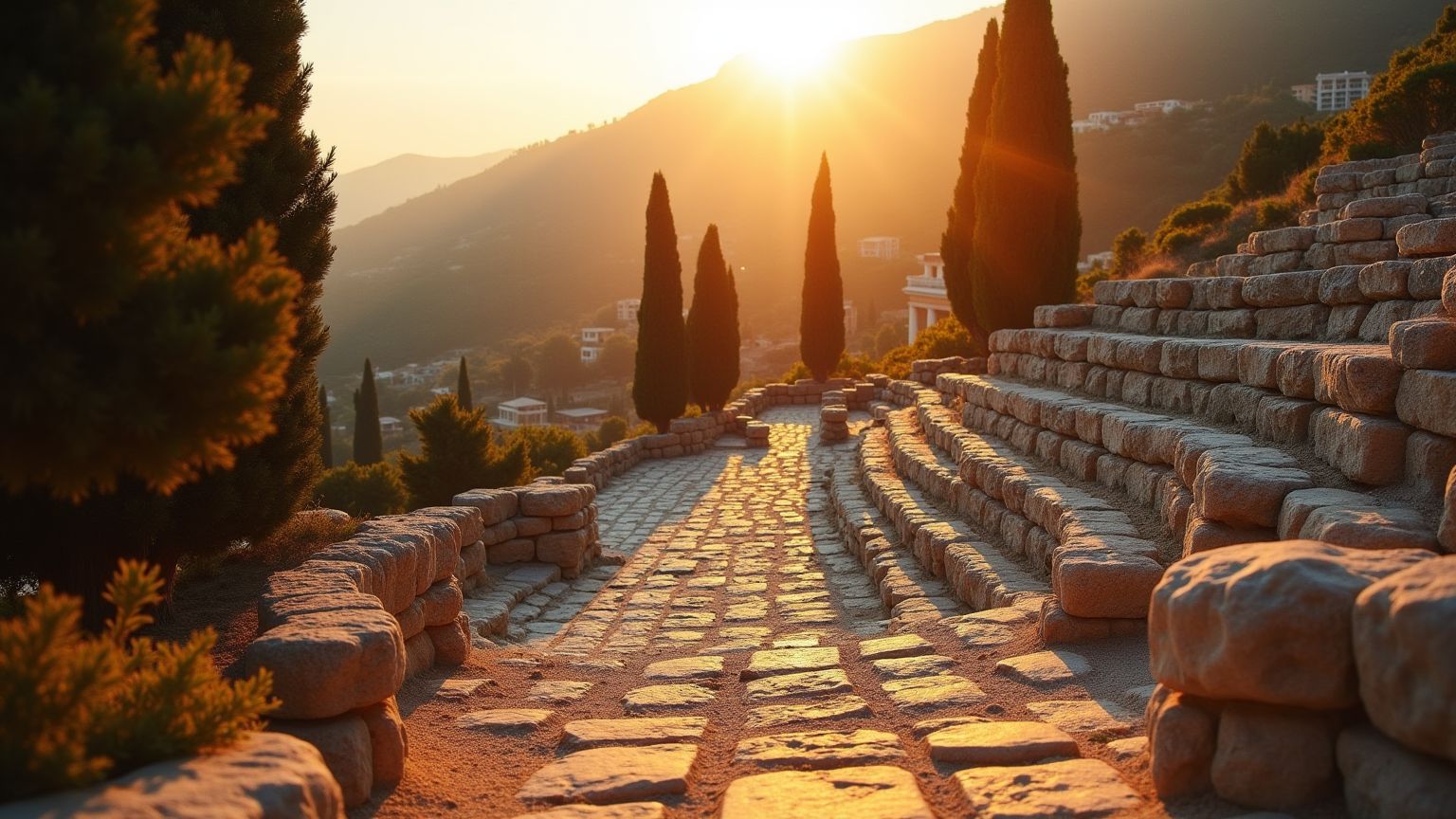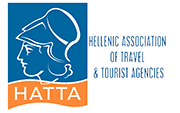The Ultimate Guide to Exploring Olympia Greece: Birthplace of the Olympic Games
Let me spill the beans on Olympia Greece after 15 years of showing wide-eyed travelers around. Trust me, something bewitching happens when folks first set foot where ancient athletes once competed. No glossy brochure captures the way sunlight dances through gnarled olive trees or that spine-tingling moment when you realize you're standing where sporting legends competed nearly 30 centuries ago.
I've thrown together this no-nonsense guide to help you navigate Olympia Greece with some hard-earned wisdom that goes miles beyond the usual tourist traps. History buff, archaeology nerd, or just culturally curious? This guide's got your back.

Olympia Unwrapped: The Backstory You Need
Before we dive into the nitty-gritty, let's talk about why Olympia Greece matters so darn much. Unlike other ancient Greek hotspots that were bustling metropolises, Olympia was primarily Zeus's playground—a sanctuary dedicated to the thunder-throwing boss of Mount Olympus. What started as a modest religious hangout in the 10th century BCE eventually morphed into the crown jewel of Pan-Hellenic competitions.
The first Olympics got penciled into the history books in 776 BCE, though folks were likely racing each other informally long before that. What kicked off as a quick foot race eventually ballooned into a five-day extravaganza held every four years. Get this—even warring Greek cities would call timeout during the Games, allowing safe passage for everyone involved. Talk about sports diplomacy!
The Games kept rolling for nearly 1,200 years until Emperor Theodosius I (bit of a buzzkill) banned all pagan celebrations in 393 CE. After that, Mother Nature took over—earthquakes, floods, and landslides gradually buried Olympia Greece until archaeologists stumbled upon it in 1766.
When to Hit Up Olympia Greece
After guiding visitors through every season in Olympia Greece, I've got some straight talk about timing your trip:
Spring (April-May):
- My absolute sweet spot for visiting Olympia Greece
- Archaeological site explodes with wildflowers
- Perfect 65-75°F (18-24°C) temperatures
- Blissfully free from summer hordes
- The lush surroundings give you that "time machine" feel
Early Summer (June):
- Still heavenly weather-wise (70s-80s°F/25-30°C)
- Tourist numbers creeping up but not yet overwhelming
- Extended daylight hours for exploration
Peak Summer (July-August):
- The high season crush descends on Olympia Greece
- Mercury can skyrocket past 95°F (35°C)
- Pro tip: Be an early bird (site opens at 8 AM) or swoop in late afternoon to dodge both the scorching sun and cruise ship battalions
Fall (September-October):
- Another golden period for Olympia Greece
- Crowds thin out considerably
- The countryside turns honey-colored as olive harvest begins
- Warm days give way to jacket-worthy evenings
Winter (November-March):
- The road less traveled in Olympia Greece
- Temperatures hovering between 45-60°F (7-15°C)
- Occasional rain showers that rarely ruin a full day
- The ruins take on a haunting, pensive quality history enthusiasts often treasure
Getting Your Feet to Olympia Greece
Tucked away in the western Peloponnese, Olympia Greece isn't exactly on the main tourist highway, but don't let that fool you—it's plenty accessible.
From Athens:
- About 3.5-4 hours of windshield time via highway E65
- Consider making Olympia Greece part of a bigger Peloponnese adventure including Nafplio, Mycenae, or the knockout beaches along the western coast
- Not driving? KTEL buses leave daily from Athens' Kifissos Bus Terminal, though expect a 5.5-hour journey with a pitstop in Pyrgos
From Patras:
- Just landed by ferry from Italy or the Ionian Islands? You're practically in Olympia's backyard—only 1.5 hours by car
- Regular buses connect Patras to Pyrgos, where you can hop another to Olympia Greece
Guided Tours:
- Many visitors grab day trips from Athens or multi-day Peloponnese packages
- Warning: these typically squeeze Olympia Greece into a measly 2-3 hour window—barely time to scratch the surface
- If you can swing it, spend at least one night in Olympia
Local Transportation:
- Modern Olympia Greece is wonderfully compact
- The archaeological treasures and museums sit just a 10-minute stroll from most places you might lay your head
Where to Crash in Olympia Greece
Despite being historically heavyweight, Olympia remains a sleepy little town with fewer than 1,000 year-round residents. This translates to limited but generally excellent-value accommodation compared to Greece's more touristy hotspots.
Fancy Digs:
- Hotel Europa: My personal go-to recommendation for comfort seekers in Olympia Greece. Nestled among ancient olive groves with valley views that'll make your Instagram followers jealous. Bonus: killer swimming pool and restaurant.
- Arty Grand Hotel: The town's top-shelf option, boasting spacious rooms, an inviting outdoor pool, and gardens that seem to stretch forever.
Middle-of-the-Road Options:
- Hotel Antonios: Family-run charm with rooms that often peek at the archaeological site. The owners know Olympia Greece like the back of their hand and love sharing tales.
- Olympic Torch Hotel: Smack in the center of town with freshly renovated rooms and a garden breakfast spot that'll tempt you to linger over your morning coffee.
Wallet-Friendly Picks:
- Pelops Hotel: Small but mighty, offering simple-yet-comfortable rooms, a garden that feels like someone's carefully tended backyard, and possibly the most spectacular homemade breakfast in all of Olympia Greece.
- Camping Alfios: Traveling with a campervan or prefer sleeping under canvas? This well-kept campground hugs the Alfios River, just a 15-minute walk from the main Olympia Greece attractions.
Word to the wise: If you're hitting Olympia Greece between June and September, book your bed well ahead—options are surprisingly limited and fill up faster than the ancient stadium once did.
Diving Into the Archaeological Wonderland of Olympia Greece
Now for the main event—the archaeological site itself. Sure, you could blitz through in 90 minutes, but why rush? I recommend carving out at least 3-4 hours to properly soak in both the ruins and museums of Olympia Greece.
The site welcomes visitors daily from 8:00 AM, with closing times that dance with the seasons (8:00 PM summer, 5:00 PM winter). Entrance will set you back €12 for adults (€6 reduced) April-October, dropping to €6 (€3 reduced) November-March. Combo tickets including both museums cost €14/€7.
Can't-Miss Highlights of Olympia Greece:
The Stadium: Hands-down the most goosebump-inducing spot in Olympia Greece. The 192.28-meter track (standardized to fit 20 runners side-by-side) still features the original stone starting blocks. I always tell visitors to stand on them for a minute, close their eyes, and picture 40,000 spectators roaring from the earthen embankments. Unlike Roman-era stadiums with their fancy stone seating, Olympia kept it real with simple grass mounds for spectators.
Temple of Zeus: Once housed the jaw-dropping gold and ivory Zeus statue sculpted by Phidias (one of the Seven Wonders of the Ancient World). Today, the collapsed columns of Olympia Greece create their own kind of wonder. Check out those massive stone drums—each weighs several tons. Imagine hoisting those 30+ feet in the air without modern machinery!
The Palaestra and Gymnasium: The ancient equivalent of a sports complex where athletes trained and prepped. The Palaestra primarily hosted wrestling, boxing, and jumping events, while the neighboring Gymnasium was running central.
Temple of Hera: The oldest temple in Olympia Greece, dating back to around 600 BCE. This spot still plays a starring role in modern Olympic traditions—it's where they light the Olympic flame using nothing but sunlight and a curved mirror.
The Workshop of Phidias: The legendary sculptor's studio where he crafted the colossal Zeus statue. Archaeologists identified it thanks to leftover ivory chips and tools. Later repurposed as a Byzantine church—talk about adaptive reuse!
The Philippeion: A circular monument commissioned by Philip II of Macedon (Alexander the Great's dad) after military victory in 338 BCE. This elegant structure in Olympia Greece once displayed gold and ivory statues of Philip's family—a not-so-subtle flex of Macedonian muscle.
Insider Hacks for Olympia Greece:
- Shade is scarcer than authentic Greek recipes on Pinterest, so pack a hat, slather on sunscreen, and bring enough water to hydrate a small army (especially summer visitors).
- Most tour groups attack the site counterclockwise from the gymnasium. Buck the trend and go clockwise to dodge the human traffic jams.
- For photography buffs: early morning or late afternoon light turns the honey-colored stones of Olympia Greece into pure magic.
- While hired guides hover at the entrance (€60-ish for a 90-minute tour), the site's excellent signage means self-guided exploration works perfectly fine with a decent guidebook.
- Don't overlook the western sections of Olympia Greece where you'll find the ancient swimming pool, various treasuries, and blessed moments of solitude away from the crowds.
Olympia's Museum Marvels
Olympia Greece boasts two knockout museums that perfectly complement the archaeological site:
The Archaeological Museum of Olympia houses some absolute treasures:
- The metopes and pediments from Zeus's temple, showcasing Heracles' Twelve Labors and the wild mythological throwdown between Lapiths and Centaurs
- The Nike of Paionios—a masterclass in 5th century BCE sculpture showing the goddess of victory seemingly catching air
- The Hermes of Praxiteles, one of precious few original works by this master sculptor, with marble so lifelike you'll swear it might breathe
- Miltiades' battle helmet, worn by the general who led Athenians to victory at Marathon
The Museum of the History of the Olympic Games offers fascinating peeks into ancient athletics through artifacts, models, and excellent explanations. You'll see actual sports equipment used by ancient Olympians, prize vessels, and artwork depicting various Olympic events in Olympia Greece.
I typically suggest visiting the museums before hitting the archaeological site of Olympia Greece since they provide helpful context. That said, many visitors prefer exploring the ruins first and then retreating to the air-conditioned museums during the afternoon heat—a solid strategy during summer's scorching grip.
Beyond the Obvious in Olympia Greece
While the archaeological wonders and museums steal the spotlight, Olympia Greece offers several additional experiences worth your time:
The Hill of Kronos: This pine-studded hill right next to the sanctuary rewards a quick 15-minute climb with breathtaking views over all of ancient Olympia Greece. Perfect for orientation and photos that'll make your social media followers green with envy.
Modern Olympic Academy: Just outside the archaeological site, this training center occasionally opens its doors to the public for Olympic-themed exhibitions.
Modern Village of Olympia: The contemporary town offers pleasant evening strolls with its pedestrian-friendly center packed with cafés, tavernas, and shops selling liquid gold olive oil, honey, and handcrafted souvenirs.
Natural Attractions Near Olympia, Greece:
- Foloi Oak Forest: Just 30 minutes from Olympia sits Europe's only oak forest, steeped in centaur legends and perfect for hiking
- Neda Waterfalls: A series of gorgeous cascades about 45 minutes from Olympia, Greece with summer swimming holes that'll make you feel like you've stumbled into paradise
- Kaiafas Thermal Springs: Natural hot springs said to cure what ails you, located half an hour away beside a pristine lake and beach
Eating Your Way Through Olympia, Greece
The Ilia region surrounding Olympia produces agricultural goods that would make the gods themselves drool. Don't miss these local delicacies:
- Olive Oil: The liquid gold from Olympia, Greece deserves its reputation—often available for tasting and purchase from local producers
- Honey: Local beekeepers produce thyme and pine honey that'll ruin you for the supermarket stuff forever
- Avgotaraho: Cured fish roe—think of it as Greek caviar
- Tentura: A spiced liqueur that warms you from the inside out
Where to Fill Your Belly:
- Taverna Aegean: My top pick for no-nonsense Greek food in Olympia, Greece. Their slow-cooked lamb kleftiko practically falls off the bone, and the grilled octopus could convert a vegetarian. Look for their garden terrace on the main drag.
- Olympia Garden: For authentic mezedes (small plates) and meat hot off the grill. This family operation sources ingredients from their own farm outside Olympia, Greece.
- Bacchus: Slightly upscale with creative Greek cuisine that respects tradition without being shackled by it. Their wine list showcases local varieties you'll rarely find outside Greece.
- Kostas Souvlaki: When you need a quick, no-fuss lunch of perfectly grilled meat wrapped in pillowy pita bread.
For a truly unforgettable meal experience, ask your hotel about any seasonal agricultural festivals in villages surrounding Olympia, Greece. These community feasts offer a chance to break bread with locals and experience authentic rural Greek life that tourists rarely glimpse.
Nuts and Bolts for Your Olympia, Greece Adventure
Lingo: While Greek is the mother tongue, English gets widely spoken in tourist-facing businesses around Olympia, Greece. That said, learning a few Greek phrases will earn you smiles and sometimes extra portions.
Money Matters: Greece embraces the Euro. ATMs pepper the town, but carrying some cash makes sense—smaller spots in Olympia, Greece might give you the side-eye for trying to pay for a €2 coffee with plastic.
Opening Hours: Greeks typically observe an afternoon siesta, with many shops in Olympia, Greece shuttering between 2-5 PM before reopening until well into the evening, especially during summer months.
Tipping: Service usually gets baked into restaurant bills, but rounding up or leaving 5-10% for good service won't go unappreciated in Olympia, Greece.
Health & Safety: Olympia, Greece ranks among Greece's safest destinations. Your biggest health concerns are dehydration and sunburn during summer. The nearest hospital sits in Pyrgos, about 20km away.
Seasonal Celebrations in Olympia, Greece
For a deeper dive into local culture, consider timing your visit to coincide with these events:
- Lighting of the Olympic Flame (March/April of Olympic years): A genuinely moving ceremony held at Hera's Temple in Olympia, Greece before the torch begins its global journey
- Ancient Olympia International Festival (July-August): Features performances, concerts, and exhibitions, often staged in ancient venues around Olympia, Greece
- Olive Harvest (November-January): Not a formal festival, but this is when the countryside around Olympia, Greece buzzes with multigenerational families gathering to harvest olives, some offering visitors chances to participate
- Village Saint's Day Celebrations: Throughout the year, communities near Olympia, Greece honor their patron saints with music, dancing, and feasting. Ask locals about upcoming panigiri (festivals) for an authentic slice of Greek life
Parting Thoughts: Making Olympia, Greece Matter
After guiding thousands through Olympia, Greece, I've noticed those who connect most deeply with the site are folks who grasp its significance beyond the tumbled stones. Olympia wasn't just a sports venue—it was where warring Greek states pressed pause on hostilities to compete peacefully, where art, philosophy, and physical prowess received equal billing.
When wandering through Olympia, Greece, find moments to simply sit and absorb. Early morning or late afternoon, when the crowds thin, you might catch whispers of ancient footfalls and long-faded cheers. Consider the thread running between those ancient contests and today's Olympic spectacles—the same human yearning for
🏺 Discover Ancient Greece With Expert Guides
Transform your historical knowledge into unforgettable archaeological experiences
Historical Tours
UNESCO Archaeological Sites
Peloponnese Tours
25+ Local Experiences
Adventure Tours
Outdoor Activities








